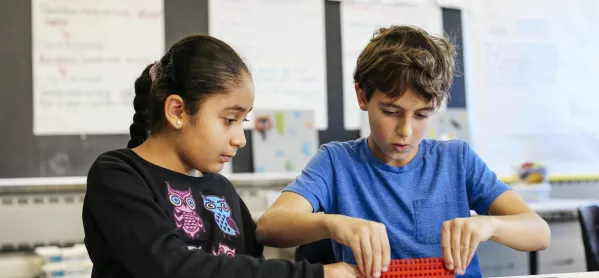Building the bridge from primary to secondary coding

In this day and age, learning to read, write and code all fall into the same bracket. After all, digital skills are key for our future generation, as no matter what career path they choose, it’s likely to include some form of technological elements. However, although teaching coding can lead to rewarding career prospects, there appears to be a disconnect between coding at primary and secondary level. So, how do teachers bridge this gap to ensure pupils embrace the subject and continue to unlock their potential in order to become digital entrepreneurs of the future?
The technology industry and STEM in general has exploded over the last few decades, with coding quickly-becoming a highly desirable skill in the marketplace. The Tech Nation 2017 report concluded that the UK technology sector is growing at “twice the rate of the wider economy”, with tech investment higher than anywhere else in Europe. However, the challenge we’re facing is that while the number of digital tech jobs grow, the ratio of potential candidates isn’t relative.
So what can we do to improve this? Well, in the words of Richard Branson, “Teaching young people to code early on can help build skills and confidence and energise the classroom with learning-by-doing opportunities”.
Taking it back to basics
When it comes to coding at primary level, it’s important to make it as visual and hands-on as possible, in order to capture their imaginations and help them understand the purpose of what they are learning.
This ‘learning-by-doing’ culture is a sure-fire way to engage pupils; after all, coding doesn’t have to just be sitting in front of a screen and typing lines of text. Giving them the tools to get hands-on - whether that’s building robots, creating puzzles or playing games - means they are able to explore various concepts and commands.
Combining this with simple programming languages like Scratch, pupils are able to drag and drop blocks into a sequence in order to create the program and watch their creations come to life.
Getting pupils to follow instructions for guided projects is a good way for them to get to grips with coding in the early stages. For example, select a theme or subject, state the problem and ask them to find a solution. Relating this to a real concept will also help them understand how coding is applied in everyday life. For example, in order to prevent flooding, pupils could design a floodgate that controls water flow according to various precipitation patterns.
While the concept might appear daunting, aiding them with step-by-step instructions means they are able to follow the process from start to finish, building their confidence before trying more complex, open-ended tasks that require them to come up with their own solutions and designs.
This next step encourages them to play around with the code, explore the options of adding in sensors or motors, and trialling and testing different options until they find the right outcome. Doing all of this will help pupils build a solid understanding of coding, how it works and how it can be applied to real-world concepts.
Stepping it up a gear
At secondary level, programming is often ramped up with many students being introduced to more complex languages including Python and Java; far more advanced, mathematical and text-based. Without the right foundations and support in place, we risk alienating pupils, leading them to disengage from the subject altogether.
Jumping from Scratch to Java is like jumping from simple addition to learning how to calculate pi; it’s not something that happens overnight and is an unrealistic expectation. Instead, you need to build the necessary skills over a prolonged period which then helps you get from A to B.
For coding, skills such as communication, teamwork, problem-solving and creativity are arguably just as important as mastering the subject itself. Therefore, we need to ensure what is being delivered in the computing curriculum also looks to boost these skills. Encouraging pupils to work in pairs or groups not only develops these hyper-relevant skills but also gives them the responsibility to delegate roles and assess each other’s strengths and weaknesses and determine how they can complement and support one another.
While coding isn’t the be-all and end-all, it is a fundamental part of the future, so having a practical understanding is essential for teachers in order to adequately support pupils in reaching their full potential. For many computing teachers, this isn’t an issue. However, for those lacking prior experience in coding, there are a wide range of training and workshop opportunities to help them understand the basics and accelerate learning in the classroom.
In the same way as giving primary pupils the freedom to find their own solutions to coding, allowing secondary pupils to take ownership of their learning will generate a sense of perseverance, motivation and achievement.
Building on this ownership and tapping into pupils’ creativity will help them identify potential careers in coding. For example, ask them what they would create if they could design a program for anything? Something so simple can spark so many weird and wonderful ideas, from building a robot that cooks dinner to a scooter that programs their route to school. It is a great way to demonstrate the infinite possibilities that a career in the technology industry could offer them.
While coding is indisputably a key skill of the future, it is also an opportunity to encourage pupils to think creatively. And only when we support them from primary through to secondary and beyond, will they be able to see the huge opportunities that await them.
Check out LEGO Education’s free computing resources and find out how they can help you achieve success in the coding classroom on https://education.lego.com/en-gb/coding
